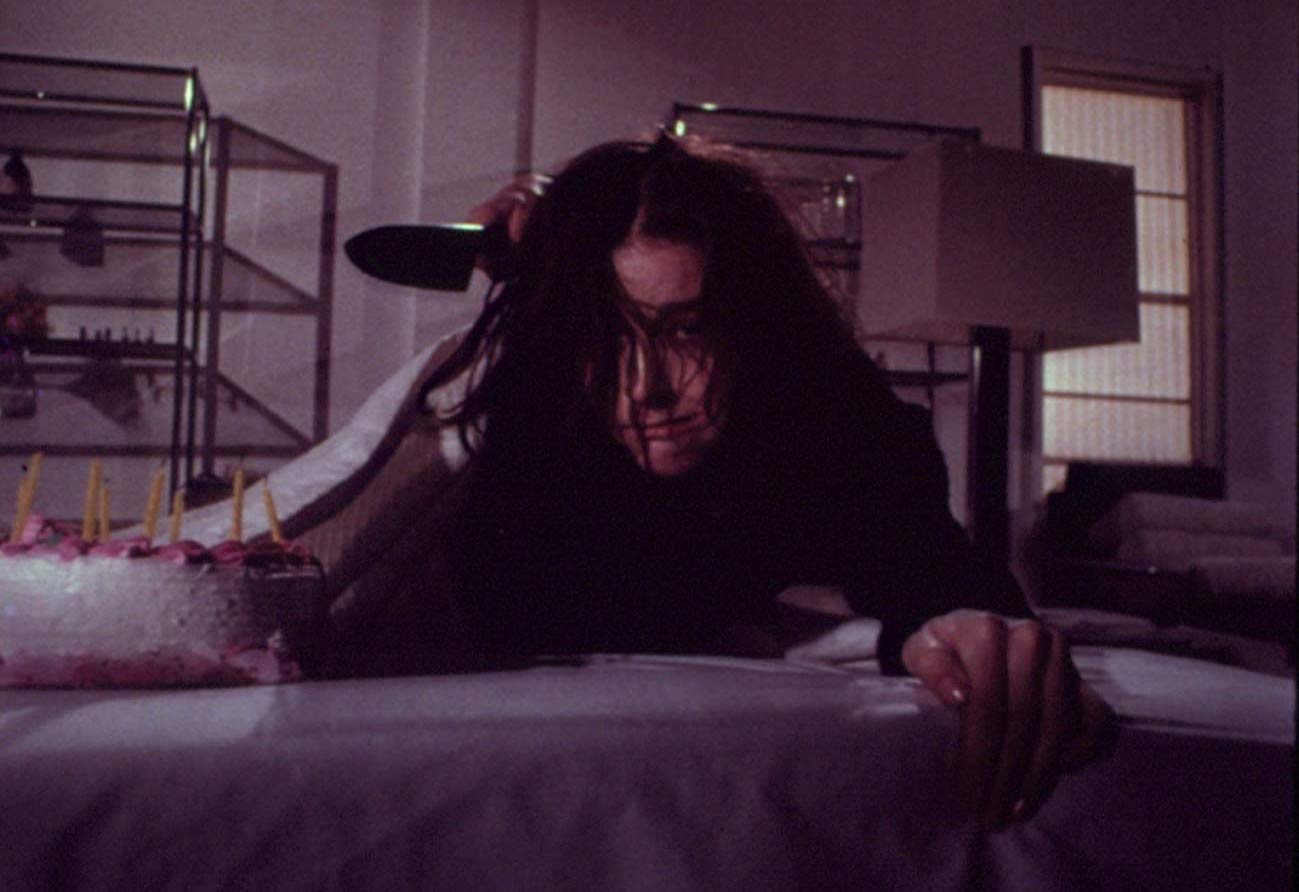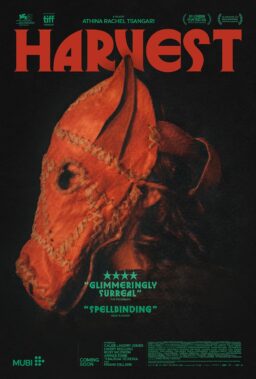A few years ago, I found myself writing an article for this very website in which I did an overview of the films of Brian De Palma. Initially, I wrote about the films in a straightforward chronological order but towards its completion, it was decided that I should rank them in preferential order. As someone who considers De Palma to be his favorite filmmaker, this was a dream article to write. While I still pretty much agree with the order that I put them in, my only regret is that it appears as if I am underrating or outright dismissing some highly worthy works. Take “Sisters,” De Palma’s 1973 movie that marked his first full excursion into the horror/suspense genre that his name would be synonymous within a few years of its release. When I wrote the article, despite praising virtually every aspect of the film and complaining only that the ending came across as a little rushed, I placed it at #14, right between “Mission: Impossible” (1996) and “Body Double” (1984). Now, having just watched “Sisters” again on the occasion of its Blu-ray debut as part of the esteemed Criterion Collection, I find myself thinking that perhaps I should have ranked it higher, partly because of the significant effect that it would prove to have on De Palma’s career and partly because it is just as striking, shocking and startling to watch today as it was when it debuted more than 45 years ago.
Just before making “Sisters,” De Palma was in the first real low point in what would eventually prove to be a roller-coaster career. Having begun his career with the low-budget underground films “The Wedding Party” (which he made in 1964, though it wasn’t released until 1970) and “Murder a la Mod” (1968), De Palma scored a cult hit with “Greetings” (1968), an outrageous satire about a trio of friends (including a then-unknown Robert De Niro, who De Palma worked with on “The Wedding Party”) navigated the social, political and sexual upheaval of the late Sixties, and followed that with the equally audacious semi-sequel “Hi Mom!” (1970). The attention that De Palma got from these films was noticed by Warner Brothers, who hired him to direct “Get to Know Your Rabbit” (1972), which was intended to be a studio version of the kind of contemporary social satire that he had been doing on the streets for practically nothing with his friends. Perhaps predictably, De Palma’s iconoclastic sensibility put him at odds with both the studio and his star, Tommy Smothers, and after numerous clashes with both, he was eventually fired from the project. The resulting film, which sat on the shelf for a long time before being briefly released, was a total flop that was all the worse for De Palma because his name was still on it even though he had nothing to do with its final form.
After that bruising experience with the world of studio politics, De Palma elected to return to the world of low-budget independent filmmaking that allowed him to have more control over his work. The initial inspiration for what would eventually become “Sisters” came when De Palma read a 1966 article in Life magazine about Masha and Dasha Krivoshlyapova, a pair of sisters from Moscow who happened to be conjoined twins. In particular, he was struck by a photograph that pictured one of them looking as sunny and cheerful as can be, while the other had a darker and more disturbing expression. In addition, the photo had a caption that mentioned that while the two sisters were perfectly healthy from a physical perspective, both were beginning to develop psychological problems. Using that as a jumping-off point and determined to make a film with a more concise and straightforward narrative than his previous, improv-heavy works, he and co-writer Louisa Rose, whom he had met when both were attending Sarah Lawrence College in the early Sixties, penned a screenplay that would take that notion and spin it out into a grisly mystery/thriller that would also pay obvious homage to such favorite filmmakers as Alfred Hitchcock, with nods to such classics as “Rope” (1948), “Rear Window” (1954), “Vertigo” (1958) and “Psycho” (1960), and Roman Polanski.

(At this point, I am about to describe the plot of the film so if you haven’t seen it yet and want to go into it as fresh as possible, feel free to put this essay aside until after you have watched it.)
As the film opens, ad salesman Philip Woode (Lisel Wilson) is getting dressed by himself in a locker room when a blind woman enters and begins to undress. As it turns out, Phillip is the victim of a “Candid Camera”-like game show entitled “Peeping Toms” and the contestants have to correctly guess whether he quietly stood there and watched as she continued to strip or if he did the noble thing and left. After being reunited on game show stage, Phillip and the woman, who is not blind at all but an aspiring French-Canadian actress-model named Danielle Breton (Margot Kidder), are presented with their prizes—Danielle gets a full set of cutlery while Philip, who is African-American, receives dinner for two at a supper club called the African Room—and decide to go make use of Philip’s prize. Although their meal is briefly interrupted by the arrival of Emil Breton (William Finley), who claims to be Danielle’s ex-husband and who insists that she come back with him before being thrown out of the place, the two hit it off and wind up going back to her Staten Island apartment. Once inside, Philip sees Emil standing watch outside and creates a ruse to convince him that he has left and after Emil departs, he returns and spends the night with Danielle on her sofa bed.
Up until this point, the film has been playing like one of De Palma’s previous films—especially in regards to the acute satire on display during the game show and dinner date sequences—with the presence of Emil and the brief shot of a bizarre scar on Danielle’s thigh the only suggestions that something else is going on. The next morning, however, things begin to take a turn when Philip wakes up and overhears an argument between Danielle and an unseen person in the bedroom. When he asks, Danielle tells him that the other person is her twin sister Dominique, who is there to celebrate their shared birthday. Philip goes down to a nearby drugstore to pick up a prescription for Danielle, who is feeling ill, and impulsively buys a birthday cake for the sisters as well. When he returns, he brings the cake out to the sleeping Danielle but it turns out to be the far more crazed and manic Dominique, who grabs the knife—one of the new ones, naturally—and viciously stabs him in the groin multiple times before disappearing. Mortally wounded, Philip drags himself to the window and writes “Help” in his own blood before finally dying.
The entire gory crime is witnessed by another resident of Danielle’s apartment complex, Grace Collier (Jennifer Salt), who immediately calls the police and runs downstairs to wait for them. As it turns out, Grace is a reporter for a Village Voice-like newspaper and her recent series of articles about police brutality have not made her a favorite among the force—when a pair of cops do arrive on the scene, they spend more time with her in the lobby bitching about what she has written than in actually getting up to Danielle’s apartment. In a marvelously staged sequence that demonstrates one of De Palma’s most effective uses of his beloved split-screen visual technique, this gives the dazed Danielle and Emil, who has arrived on the scene as well, to clean up the apartment and hide the body in the sofa bed before the cops and Grace finally knock on the door. A search of the place turns up nothing, Danielle insists that no one resembling Grace’s description of the alleged assailant (“Shorter and with a twisted face”) and when Grace actually finds a piece of evidence to prove that someone else was there, she herself inadvertently destroys it. The cops leave and, assuming that the whole thing was a stunt pulled by Grace in order to get material for another story about police incompetence, warn her not to mess with them anymore.
Still convinced of what she saw, Grace decides to investigate the case on her own for the paper and her editor hires a private investigator, Joseph Larch (Charles Durning), to work with her. Larch manages to gain access to the inside of Danielle’s apartment in the hopes of finding any evidence. Since the sofa bed is so much heavier than it should be, he becomes convinced that the body has been hidden inside of it but before he can do anything, movers arrive to cart it away. While Larch follows the couch on a journey that eventually takes him to Quebec, Grace continues to investigate and gets information from a Life magazine reporter (Barnard Hughes) who had written about the sisters years earlier when they had become briefly famous as Canada’s first conjoined twins. She then follows Emil and Danielle to a nearby mental hospital where she ends up getting the rest of the story, albeit in the most nightmarish and gruesome manner imaginable.

Even though “Sisters” was De Palma’s first full-out attempt at the suspense genre, one would never be able to discern that thanks to the sheer filmmaking skill that he demonstrates here. After lulling viewers into a state of complacency during the long opening sequence, De Palma begins turning the screws on them with his ability to generate tension thanks to his detailed visual approach. The scene in which Grace’s argument with the cops is juxtaposed with Emil and Danielle trying to clean up Dominique’s mess before anyone else arrives is a virtual master class in filmmaking all by itself in the way that it effortlessly supplies a wealth of information regarding the relationship of Emil and Danielle and the mutual antipathy between Grace and the cops while simultaneously generating equal levels of tension on both fronts. It is a bravura moment that still stands as one of the greatest set pieces in De Palma’s filmography and while nothing else in the film can quite match it, a darker and moodier feel begins to dominate the proceedings—aided in no small part by the spectacularly moody score by the legendary Bernard Herrmann—and the nightmarish final sequence in the asylum, featuring key flashbacks shot in 16mm by De Palma in a manner designed to resemble “Rosemary’s Baby” (1968), is a knockout.
One aspect of “Sisters” that makes it a pure product of De Palma is in the usage of voyeurism, a theme that the director would return to time and again throughout his career. In this film, everyone is watching each other, it seems, but from skewed perspectives that prevent them from actually seeing what is right before their eyes. The game show where both Philip and the audience are seeing two different things that are not quite as they seem. Philip sees Emil but can only look at him as a jealous ex-lover of Danielle’s and not as a potential warning sign. Grace witnesses the murder but cannot actually prove anything that she saw and when she does find proof, her inability to watch where she is going ends up destroying it. It is only at the end of the film that people like Grace and Larch are able to see the truth head-on but due to circumstances, neither one is able to communicate the truths that they have seen to anyone, a notion that is perfectly articulated in the haunting shot that brings the story to a close on a deeply ambiguous note.
Even De Palma’s most devoted fans will admit that narrative logic and structure is not always of interest to him and that some of his stories do not exactly stand up to rigorous analysis when all is said and done. Therefore, watching “Sisters” proves to be a bit of a shock because the screenplay that he and Rose have conjured up is actually pretty strong and sound in the way that it provides a sturdy dramatic structure for him to build upon with his weirdo humor and elaborately designed suspense sequences. The opening 20 minutes or so are interesting in the sense that nothing really happens—none of the sex or violence that viewers might be expecting—but the characters of Danielle and Philip are so likable and engaging that it is easy to get lulled into a false sense of complacency that only makes Philip’s murder at the hands of Dominique all the more horrifying. (By employing this kind of slow burn opening, De Palma is utilizing the same approach that he would later deploy in his original version of “Raising Cain” (1992) before restructuring it into the eventual theatrical version.) With all of that going on, he manages to deftly introduce another winning and appealing character in Grace, a contemporary version of the kind of hard-driving crusading female journalist that Glenda Farrell used to play back in the day—the kind who is all about the work and becomes exasperated when her mother (Mary Davenport, Jennifer Salt’s real-life mother) keeps noodging her about when she is going to give up her hobby and finally settle down and get married. As the story progresses, things become increasingly strange and outlandish but De Palma never departs from the logic that he has established early on and indeed, one of the pleasures of watching the film again, once the surprises have been revealed, is to observe just how intricately the elements come together.

One of the more intriguing, if unexpected, things about watching “Sisters” today is the number of elements on display that now play much differently now than they did in 1973. For example, the opening sequence, in which nothing of much import happens up until the moment of Philip’s murder, presumably startled new audiences back in 1973 because they didn’t have preconceived notions of De Palma as a figure of suspense. Nowadays, if someone watches it for the first time and has some vague knowledge of De Palma’s output, they will almost certainly watch that sequence with the expectation that something is going to happen. This sensation doesn’t ruin the scene, of course, but it does add an unexpected edge to the proceedings. In the booklet accompanying the film, there’s even a 1973 interview with De Palma in which he discusses an argument he had regarding the opening with Herrmann, who protested the fact that nothing happened and that audiences would get restless. When De Palma responded that nothing much happened during the first 40 minutes of “Psycho,” Herrmann responded “He is Hitchcock and they will wait. They know something terrible is going to happen and they will wait until it does!”
“Sisters” is also an interesting film to watch in the wake of the #MeToo movement because it is, to a large degree, about women who are either ignored or abused by men in power. Throughout the film, for example, Danielle seems to be in the thrall of Emil but once the full extent of his background is revealed to us, we learn the full degree of the monstrous acts that he perpetrated on both her and Dominique, both in the name of “love” and science, and was able to get away with his actions because there was no one to challenge him. As for Grace, she is a perfectly competent and capable reporter but is still forced by her editor to be aided in her investigation by an older white guy—one who depart just before things start getting ugly and who then inexplicably never bothers to check in with her. Meanwhile, the cops are wildly hostile to Grace for having the temerity to expose the failings of their colleagues—so much so, in fact that they allow all of the evidence to a murder to disappear before they arrive on the scene. Even more appalling, when the lead cop (Dolph Sweet) finally realizes that Grace was right all along about there being a murder, his pathetic attempt make things right with is to give her a box of chocolates—the kind of thing that a dumb boyfriend might have done for his girlfriend after standing her up on a date in a Fifties movie. In the end, the women in the film do get some kind of closure for the traumas that have been perpetrated on them but unfortunately, none are in a position to fully appreciate it.
The film’s touchiest aspect for contemporary viewers is that it deals in large part with mental illness, while starring an actress who herself would go on to have well-publicized mental issues herself. Obviously, this is just a ghastly coincidence but it does lead to a couple of uncomfortable moments in the early going—especially once we have seen the movie before and now have a better idea of the degree to which the outwardly charming Danielle is struggling to keep it all together. This sensation doesn’t last too long, however, because Kidder’s performance is so effective that one becomes completely absorbed in her character. Although Kidder would become a secret crush object to several generations of youngsters due to her appearances as the intrepid Lois Lane in the “Superman” films, she was ultimately one of those actresses that Hollywood could never quite figure out what to do with—she just came across as too smart, sexy and offbeat for most of the female roles being offered at the time. With “Sisters,” Kidder had a tailor-made role (indeed, she had been dating De Palma at the time and was roommates with Salt—De Palma presented them with scripts for the film as Christmas presents) and made the most of it. As Danielle, she is sweet as can be when we first see her but, as previously noted, it is taking a lot of effort on her part to pull that off and the way that she gradually shows what is just beneath that pleasant, placid veneer is beautifully handled—by the end, she comes across as both utterly terrifying and utterly sympathetic.
Although the rest of the cast is strong as well—Salt is entertaining enough to make one wonder why her career didn’t quite take off either and Finley, who was a regular presence in De Palma’s films until his death in 2012, is a scream as Emil, who comes across as a strangely Eurosleaze version of John Waters—this is Kidder’s show and if the Blu-ray doesn’t actually have any features that could serve as a tribute to the actress on the occasion of her passing earlier this year (though it does included a revealing 1970 appearance that she made on “The Dick Cavett Show”), it could be argued that the film itself is perhaps the best and most effective possible celebration of her unique and much-missed talents.

When “Sisters” was released in 1973 by the legendary American International Pictures, it proved to be a success at the box-office and earned De Palma a number of good reviews, many of which cited the influence of Hitchcock over the proceedings, the start of what would prove to be a standard (if often inaccurate) observation about his work in general. De Palma would go on to make bigger and better-known movies over the years but few would prove to be as influential on his career as this one—many of his classic films from that point on contain ideas and images that one could trace directly back to his work here. As a result, it would also prove to be an influence, both directly and indirectly, with the countless number of filmmakers over the last four decades or so who have themselves been influence by De Palma and his work. There was even a remake of the film produced in 2006 and while it certainly had an intriguing cast—the Kidder, Salt and Finley roles were filled, respectively, with Lou Doillon, Chloe Sevigny and Stephen Rea—the fact that there is an excellent chance that you are hearing about this film for the first time right now should suggest how well it turned out.
Criterion put out a DVD of “Sisters” way back in 2000 and for this long-awaited upgrade, they have included an nice array of old and new extras. The best feature, of course, is the nice-looking 4K digital restoration that was supervised by De Palma that makes it look better than it probably has in its entire existence. In addition to the aforementioned Kidder interview, the extras also include a new interview with Salt, archival interviews from 2004 with De Palma, Durning, Finley, editor Paul Hirsch and producer Edward Pressman, the audio portion of a 1973 talk De Palma gave at the AFI and a booklet that includes another 1973 interview with De Palma and an informative essay on the history and meaning of the film penned by critic Carrie Rickey. All in all, a more-than-respectable presentation of a film that really deserves a higher ranking in the annals of suspense/horror history than it currently maintains—it is funny, unnerving and engrossing in equal measure and once it is all done, there is an excellent chance that you will never look at a birthday cake the same way again.
To order your Criterion Blu-ray of Brian De Palma’s “Sisters,” click here












